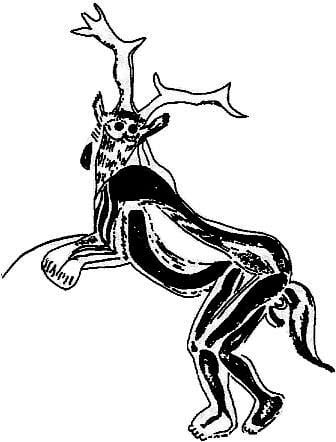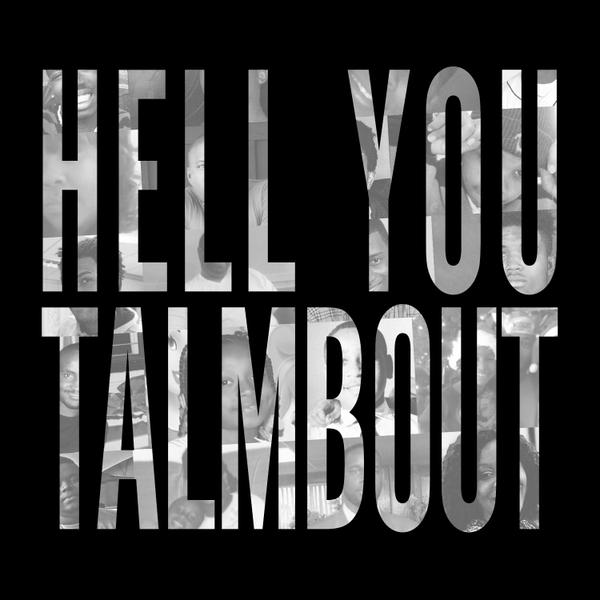
If we accept the premise which I discussed a couple of weeks ago, that historical witchcraft fits a worldwide pattern of shamanism, then what does that mean for those of us trying to follow the path of a traditional witch? Especially in a culture that barely registers that there is such a thing.
To begin with, I think that shamanism, like music and art, while it has significant cultural components is not so much a belief system as an inherent quality or ability of human beings. The particular manifestation is cultural, but the traits which generate it seems to be universal. The emergence of H. sapiens sapiens is marked in the archeological record with an astounding burst of technological innovation and artistic expression. We have no way of knowing for sure what our remote ancestors were thinking as they drew figures like “The Sorcerer” on cave walls, or carved bird-woman figurines, or played flutes carved from bone. However, such expressions are both ancient and pretty much universal, and they are generally accompanied by a common set of ideas and perceptions of the world. The notion that the evolutionary jolt that produced modern humans was also accompanied by an outpouring of shamanic practice is not a huge leap. We do know that historically dance, music, drama, storytelling, and the other arts in their most ancient forms all have their roots in religious (read shamanic) ritual. Either directly or indirectly, shamanic practices and their accompanying artistic expressions must have conveyed a powerful evolutionary advantage, which led to a rapid global shift in human culture along with the spread of the new variant of H. sapiens. We are all a product of that revolution.
This suggests, among other things, that a human population will produce shamans every so often, regardless of whether or not that is a recognized position in society. I would argue that that is indeed what happens. In modern Western society for the last two hundred years or so, most wound up as artists of some sort. Some (especially the women) wound up in the madhouse. Before that, many were convicted of witchcraft. Modern industrial society does not lack shamans; what we lack is a cultural context for understanding when we see one, support for the often traumatic experiences that produce one, or the knowledge of what to do with a shaman once we have one.
Mostly, but not entirely. People still know what a witch is, and some understand it better than others. People know what a rootworker is, at least some do. I know a woman who works at Miller’s Rexall in downtown Atlanta; she works with spirits, does readings, helps people with their problems. She doesn’t use the word shaman for herself, but she fits one definition of it. Her clientele is mostly working class, mostly African American. As ever, those who are on the margins retain appreciation for things the rest of us have forgotten.
This conception of witch as shaman points to a divergence in modern witchcraft. To some of us, witchcraft is a calling, a state of being, something that we didn’t choose so much as it chose us, and it is ferociously personal, perhaps comprehensible only to other mystics and shamans; to others, it is a religion, one that can be practiced casually, taught in classes, made into churches. I’m not interested in debating which is more legitimate, but I am interested in the historical background and modern examples of the former, and I do think it’s important to point out that they are in fact different. If you try to fit into one when you are really looking for the other, you will find yourself disappointed or very confused.
Without precluding other definitions of the word, when I speak of the kind of witchcraft I do, I mean someone who has one foot in the Otherworld and an ongoing relationship with the beings who reside there. I also usually mean one whose conception of that relationship is framed or influenced by European folklore (though not exclusively). Not every witch is necessarily a shaman, just as not all shamans are witches. This viewpoint shapes my ideas about a whole range of things: for example, I don’t charge money to teach someone to be the kind of witch that I am, because (among many other reasons) I don’t think that is under my control. They have to forge their own relationship with the spirits and the Gods; I can help them do that, but charging money for that strikes me as ludicrous and ethically questionable. It would be a bit like introducing someone to my social circle (or my family) and expecting them to pay a fee. I do on the other hand feel that it is important to talk about this kind of witchcraft (up to a point) in an accessible way, because of what I mentioned above…that our society has mostly lost the ability to understand it for what it is. This may not matter to most people, though I happen to think that it holds a greater significance for the world at large, including some solutions to the problems we all face. But for some few, the understanding that what is happening to them fits a pattern, that there’s more to it than just being artistic or “weird” or having an extremely vivid imagination, may be a life-saver. At the very least it gives them a way to understand the world and themselves that doesn’t require shaving off bits to fit into a container that is too small, like Cinderella’s step-sister with a glass shoe…an enterprise that is both grotesque and doomed to failure.
So if I think that a traditional witch forms a relationship with the Otherworld independent of other humans (and I do), then whither initiation? I’m glad you asked, because that’s what I plan to talk about next week.
















